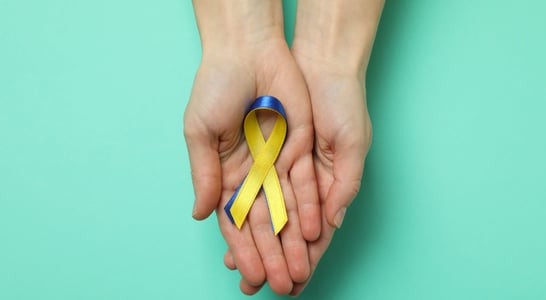
ALS Awareness Month
A condition affecting motor neurons, ALS challenges resilience, fostering community, advancing research, and supporting individuals.
ALS, or Amyotrophic Lateral Sclerosis, is a disease where the body of the person loses its neurological connections with the brain. This progressive condition causes the person to slowly lose access to their ability to walk, eat, talk and, eventually, breathe on their own. ALS Awareness Month is here to improve public knowledge about this disease while searching for a cure.
History of ALS Awareness Month
ALS was first identified by the work of a French neurologist in 1869.
But it took a few more decades for this disease to become more well-known in the United States, which happened when the career of one of American baseball’s favorite players was ended by ALS in 1939. Even today, many people refer to ALS as Lou Gehrig’s disease.
The ALS Foundation was started in 1985 and remains the only national non-profit organization dedicated to fighting on the front lines, leading the way in global research, care services, government partnerships and more. A cure for ALS continues out of reach, even after decades of research and drug trials, but the organization continues to strive to find a cure – and to make ALS livable for everyone in the process.
In 1992, the first ALS Awareness Month was officially celebrated after a declaration that was passed by a joint resolution was passed in the United States Senate declaring this as National Amyotrophic Lateral Sclerosis Awareness Month. The purpose of this event is to raise public awareness about ALS, show support for those affected by it, and give recognition to those working to find a cure. Many people also got to know more about this disease through the 2014 ALS “Ice Bucket Challenge” which was a fundraising scheme that also increased popular knowledge about it.
How to Observe ALS Awareness Month
Stay connected, show support and get involved with ALS Awareness Month, getting involved with some of these plans and activities:
Learn Important Facts About ALS
One of the goals of observing ALS Awareness Month is to help people get more informed about the facts and statistics regarding this disease. A great way to get connected might be to learn about, and then share, some facts on social media to get more people involved. Consider some of these interesting facts to start with:
-
Every 90 minutes, a person is diagnosed with ALS and someone also passes away from it
-
The onset of ALS is typically during the age range of 40 to 70 years
-
The incidences of ALS are increasing and by 2040 it is predicted to increase by 70% throughout the world
-
90% of ALS cases occur without any family history, so that is not a predictor
Wear an ALS Ribbon
Many people like to show support during ALS Awareness Month by wearing a special ribbon color. In the case of those who associate it with Lou Gehrig, the ribbon color is a striped blue with a nod to the New York Yankees baseball team. But the official color stated by the ALS Association is red. Some folks might choose to wear a combination of both of these to show support!
Also in ...
View all holidaysWorld Password Day
Protect your privacy and self by taking some time to update your passwords. Avoid pet or family names, important dates, and other identifying information.
National Purebred Dog Day
Many purebred dogs offer invaluable services to mankind, from sheepherding to hunting to guarding and search-and-rescue, so give some love to purebreds.
School Principals’ Day
Organize an event or write a card to show your appreciation for the educators that run our schools. School principals work hard to make kids’ lives and educations better.
We think you may also like...
Leukemia and Lymphoma Awareness Month
By fostering understanding and support, raising awareness for these conditions brings hope, funds research, and stands with compassion beside those affected.
Rare Chromosome Disorder Awareness Day
Highlighting unique genetic variations, fostering understanding and support — a celebration of diversity in the genomic tapestry of life.
Thyroid Awareness Month
Highlighting the importance of understanding and supporting those affected by a prevalent but often misunderstood health condition.








